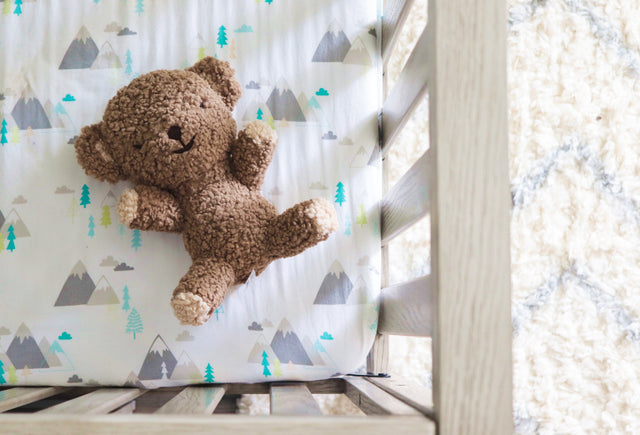How to Wash Stuffed Animals

On This Page
Parents everywhere face this problem: What to do when your child’s favorite stuffed animal needs a “bath?” There are wrong ways to wash a stuffed animal that result in shriveled fur and lots of tears… and right ways to do it that leave your lovey fluffy and ready for lots more snuggles.
Whether those fuzzy pals have been dropped in the mud, spilled on, or just cuddled for long enough that they’re getting kind of stinky, here’s our ultimate guide to removing dirt and germs from your little one’s stuffed animals, without compromising their sweet looks or soft feel.
First things first. Depending on how dirty or what type of dirty the stuffed animal is, there is a range of cleaning methods to consider. The most minimal is spot-treating, which is recommended for small or manageable messes like a spill or one small dirty spot. Also note that spot-treating is the best course of action for any stuffed animal that shouldn’t be submerged in water or machine washed. Stuffed animals you should not wash include any that:
- Are antique, handmade, or very fragile
- Contain metal like music boxes or electronic parts / batteries (for example, you must remove the soundbox before washing SNOObear)
- Have glued-on features or sequins
- Are stuffed with foam balls rather than standard batting (like Beanie Babies)
How to Spot-Clean a Stuffed Animal
To spot-treat, use a washcloth soaked in warm water and dipped in diluted dish soap or gentle laundry detergent. Wring out the cloth before cleaning the stuffed animal to avoid getting it too wet. Next, apply a very gentle up-stroke to the soiled spot, “lifting” away the dirt rather than grinding it in. Repeat with a wet washcloth that does not have soap on it, until all traces of the detergent are gone. Lay out the stuffy until totally dry, then fluff the affected spot with your fingertips to return it to its original softness.
How to Wash a Whole Stuffed Animal
Always check for washing instructions before you launder a stuffed animal, but most can be washed by hand or in the machine with care.
You’ll know it’s time for more than a spot-treat when a stuffed animal has been exposed to major germs, like during or after a bad tummy bug or flu going around the house. The same goes for any other “icks” like lice and ringworm, even if you can’t see anything on the toy. Stuffies that spend a good deal of time on the run—joining your child on outings or play dates, or that get a lot of love with nightly cuddles, will also need some routine washing.
How to Wash a Stuffed Animal by Hand
Step One: Fill a bucket or bowl with cold water, submerge the stuffy, and soak
Step Two: Add a few drops of mild detergent or clear and gentle dish soap
Step Three: Gently squeeze the stuffed animal while submerged in the water to give it a more rigorous cleaning than soaking alone
Step Four: Rinse under cold water to get the soap out, without wringing (which can lead to misshaping the stuffed animal)
How to Wash a Stuffed Animal in the Washing Machine
Step One: Place the stuffed animal in a mesh laundry bag or a zipped pillowcase
Step Two: Wash on delicate cycle in cold or warm water, avoiding normal cycles or high heat that will damage it
How to Dry a Stuffed Animal
NEVER place a stuffed animal in the dryer. This is what leads to that unattractive “curly” looking damage to their fur. You can lay the stuffed animal on a towel in a well-ventilated area to air-dry or hang it to dry by clipping its ears with the clamp of a skirt hanger.
Final Thought on Washing Stuffed Animals
Finding the balance of when and how to wash stuffed animals is key. To avoid the spread of germs and keep your household healthy, you will want to tackle this project when the stuffed animal has been soiled or exposed. That said, washing too frequently can change the texture and shape of your beloved stuffies, even when done with care.
Another way to keep stuffies clean and lessen how frequently washing is required, is to insist on handwashing before play time and bedtime to mitigate the clinginess of illnesses passed by touching. Also, consider a “no soft toys outside the house” rule, and keep stuffed animals off the floor as much as possible.
You can also lessen your work in the stuffy laundering department by limiting how many stuffed animals your child(ren) have for cuddling during a period of illness. Only having to clean one well-cuddled lovey per kid once the bug has passed through the house is a form of self-care when you’re so busy caring for everyone else.
Looking for a stuffed animal that's SO much more than just a lovey? SNOObear is a responsive, on-the-go white noise lovey that plays the sleep-boosting sounds that babies loved in SNOO. Learn more about SNOObear.